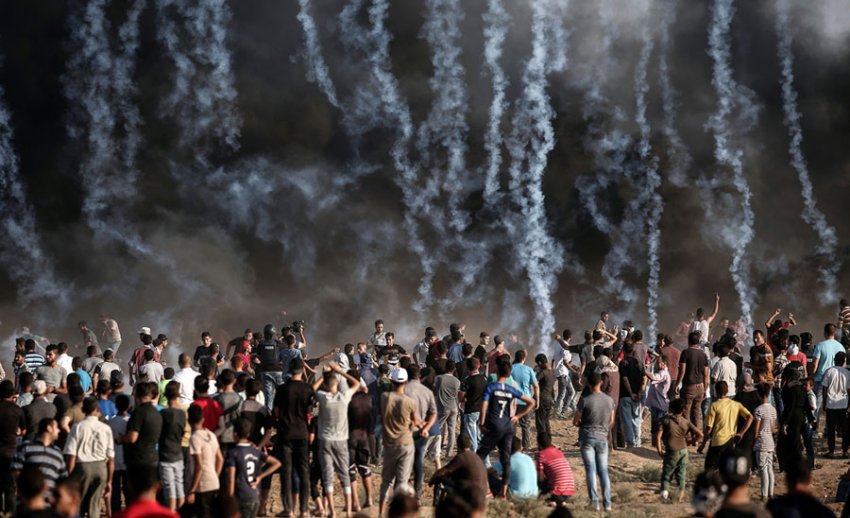
In the six months since the Great March of Return began in Gaza, with Palestinians demanding the right to return to land from which they were expelled from, Israel has killed 205 Palestinians and injured more than 21,000 others.
In that time, a whole new generation of one-legged football players and Dabke (Arab folk dance) dancers has been created. Every Friday over the past six months, protesters have approached the fiercely guarded border between Gaza and Israel to repeat their demand that they be allowed to return home. Over the same time, there has been one confirmed Israeli death and 37 Israeli injuries.
Palestinian journalists and paramedics continue to be targeted every week by Israeli snipers, with another five journalists and four medics injured by Israeli fire on October 5. It amounts to direct, brutal attempts to silence coverage of the Great March of Return and prevent injured Palestinians from receiving treatment.
Palestinian children are also at particular risk. More than one Palestinian child a week has been killed so far this year — which is three times the rate for all of last year. In Gaza, since the start of the Great March, 38 children have lost their lives. Combined deaths for Gaza and the West Bank are at 44 so far in this year.
The besieged enclave on which the Great March is taking place has five main campsites where Gazans gather before heading to the border. On the other side is the Mediterranean sea, where Israeli forces crack down on Palestinian fishing boats that stray beyond the six-mile fishing limit Israel imposes. The distance was recently cut from nine nautical miles and it can be changed at Israel’s whim.
Israeli Defence Minister Avigdor Liberman’s decision to cut the limit was supposedly influenced by “rioters” at the border between Gaza and Israel. as well as the regular fishing boat protests that take place on the coast. Even under the much-criticised Oslo Accords of the 1990s, fishing access was granted up to 20 nautical miles from the coast.
With better fish stocks farther out from the coast, such restrictions further limit Gazans’ access to fresh food.
The World Bank is hardly a progressive voice, let alone for Palestinians, so when one of its own reports states that the Gazan economy has been all but destroyed, it is a fair bet that life in Gaza is desperately grim. Unemployment stands at 53% and the economy contracted by 6% in the first quarter of this year, with indications the contraction will only continue.
The Economic Monitoring Report to the Ad Hoc Liaison Committee cites the blockade of Gaza and the United Nations Relief and Works Agency (UNRWA) funding collapse as two key drivers of economic collapse.
In the face of the ongoing siege, economic collapse and no let up in Israeli attacks on marchers, there are some signs of solidarity from the other side of the border, with Israeli activists travelling to the fence and unfurling banners with supportive messages.
Numbers are small, compared with Palestinians marching on the other side, but could still indicate the start of a potential shift in attitudes towards Gaza and Israel's treatment of it — at least among younger Israelis.
However small, any shift should be encouraged. One example of that is Return — one of the best organised Israeli groups in solidarity with Palestine. The anti-Zionist organisation coordinates actions from within Israel to support the Great March and wholly endorses the international BDS (boycott, divestment and sanctions) movement.
The Israeli government has sought to slander and dismiss the Great March as a series of “terrorist attacks”. But the 29 consecutive Fridays of the Great March are emblematic of a deeper 70 year struggle for human rights and a homeland. The Israeli government ignores this at its peril.
Palestinians and the struggle for Palestinian liberation have not gone away, despite the carve up of Palestine, despite Israeli control of Gazan land borders, sea access and airspace.